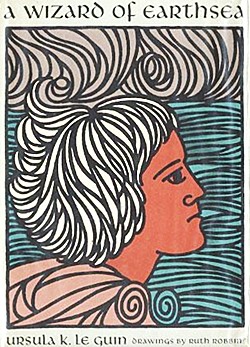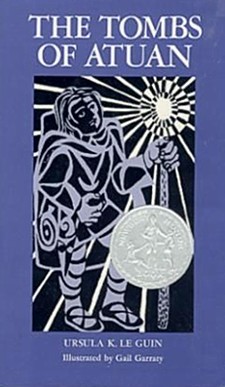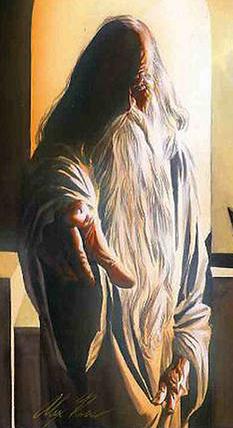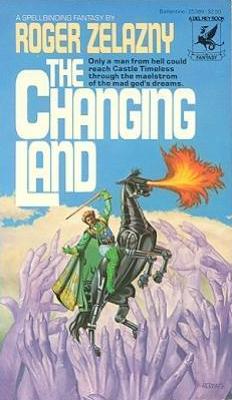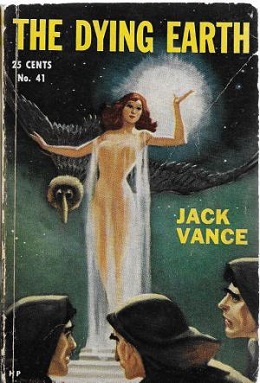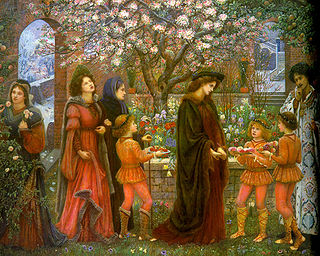In popular culture and fiction
This section needs additional citations for verification .(June 2020) |
In fantasy where magic works by evoking true names, characters often go to great lengths to conceal their true names. In some settings, such as Ursula K. Le Guin's Earthsea , this is true for all beings. In others, as in Larry Niven's The Magic Goes Away , it applies only to those of magical inclination, as where a wizard is revived from the dead only by another who found his name, and even then only with great difficulty. Finding a true name may require arcane procedures. In Earthsea, a wizard must listen for and give the hero his true name; this is performed in both Le Guin's A Wizard of Earthsea and The Tombs of Atuan .
- In Arthur C. Clarke's The Nine Billion Names of God , when all of God's names are discovered by Tibetan monks, the universe ends.
- In Glen Cook's Black Company series, speaking a sorcerer's true name aloud can snuff out their magical power. All the magic users in the series are referred to by pseudonyms, and many of them went to great lengths to kill anyone who knew their original names.
- In Christopher Paolini's Inheritance Cycle , magicians can control someone by learning their true name, and use the true name of inanimate objects in spells.
- Patricia Wrede, in her novel Snow-White and Rose-Red , has a character not succumb to a spell because the caster did not know the name he was baptized by.
- Patricia McKillip, in her novel The Forgotten Beasts of Eld , wizards, including the main character Sybel, can call people and creatures using their true name.
- In Operation Chaos , Poul Anderson has the doctor who delivers a baby issue not only a regular birth certificate, but a secret one, with the newborn's name; the hero, born before such precautions were routine, is glad to hide his daughter's true name.
- In the Bartimaeus Trilogy by Jonathan Stroud, a magician cannot have full control over a demon if the demon knows the magician's true name. As a result, all magicians have records of their true names destroyed during childhood and take a new name around adolescence.
- In Rick Riordan's The Kane Chronicles , all people and gods also have true names which give great but not total power over them. The Lightning Thief , a previous novel of Riordan's, also emphasizes on the importance of using names, particularly the names of gods.
- In J. R. R. Tolkien's The Hobbit , Bilbo Baggins uses a great deal of trickery to keep the dragon, Smaug, from learning his name. Even the sheltered hobbit realizes that revealing his name would be very dangerous. [18]
- In Ursula K. Le Guin's Earthsea canon, and specifically in her seminal short story "The Rule of Names", knowledge of the true name of a thing confers power over it. [19]
- True names and speech are the basis for magic in Diane Duane's Young Wizards series.
- The dragons of Deltora Quest believe that knowledge of their true name gives others power over them, and will thus only reveal it to trusted confidants or in dire need.
- The concept is also prominently present in The Kingkiller Chronicle by Patrick Rothfuss. Namers are powerful people who know how to call the true name of anything both animate and inanimate so that they have mastery over it. The name given at birth, however, is not a true name. Instead, the true name, or "deep name" is incredibly complex as it describes the named thing in its entirety. There is speculation over being and materials that are "Nameless" as well. [20]
- Lloyd Alexander's The Chronicles of Prydain utilizes the concept as well.
- Multiple variants of magic utilizing or grounded in the power of true names have appeared in the Dungeons & Dragons role-playing game, though never as a bedrock element of the game. For instance, certain spells are more powerful if the target's true name is known. [21]
- In the role-playing setting World of Darkness, the concept of True Names is very expansive. The True Name of a being is like a platonic blueprint to the creature. A human's True Name can even change after life-altering events. It is a description of the being, from its internal organs to its very soul. All living creatures have one, but those with more intelligence have more complex True Names. A Fallen has a True Name given directly by God, but they are unpronounceable by mortal tongues because they are not words or names in the traditional sense; rather, they are a collection of abstract sounds and concepts, such as the sound of a hundred children laughing at once or the wind whistling over the entrance of a cavern. A Fallen's Celestial Name will suffice to fill out the power a True Name has over other beings. Magic is also easier to cast and stronger against a target whose True Name is known.
- In Jim Butcher's The Dresden Files a wizard or other magical being can gain power over anyone by knowing their name, if the invoker has heard it spoken by its owner; however, as humans' names change with their nature, their magical power generally decays after a time.
- In the Doctor Who episode "The Shakespeare Code", the Carrionites are a species of witch-like beings who use words as a form of magic power. Particularly potent is someone's name, but it will only work once. The Doctor repels the Carrionites at one point using their name. [22] It is said that the Doctor's true name must never be said or "silence will fall".
- In the manga series Bleach , a shinigami (death god) must learn the true name of his or her sword, known as a zanpakutou.
- In the television series Once Upon a Time , recurring antagonist Rumplestiltskin (portrayed by Robert Carlyle) stresses on the importance of using someone or something's proper name.
- In the book series The Symphony of Ages by Elizabeth Haydon, the main character Rhapsody is a bard who discovers the gift of True Naming, giving her the ability to do many wondrous things such as changing a person's nature, freeing them of magical slavery or granting them new supernatural abilities to even camouflaging a group of adventurers in plant life to avoid detection by assassins and bandits.
- In the book series Skulduggery Pleasant by Derek Landy, every person has a name that they choose which is used to protect their other names: a name which is given to them at birth that can be used to control a person to a limited extent and a true name that can be used to control that person to an unlimited degree.
- In Superman comics, the 5th-dimensional imp Mr. Mxyzptlk can be banished from our dimension if he is tricked into reciting his own name backwards (Kltpzyxm).
- The SCP Foundation object "Taboo" is described as a location containing objects and beings capable of appearing when their names are said and stealing the names of others. [23]
- In the manga and anime series Death Note, the premise is about the ability to kill people simply using their true name and face (which is visible to beings called shinigami). People are also able to use aliases, however, the Death Note must only have the actual name to work.
- A character remembering their true name may be an important means of maintaining mastery of their own life. In Hayao Miyazaki's movie Spirited Away , the witch who runs the bathhouse, Yubaba, ensures loyalty by stealing the names of her subjects. For example, one of the witch's most loyal subjects, the spirit of the Kohaku River, has his name taken and is given a slave name: Haku. He forgets his name, and it is in this way 'taken' from him; he warns Chihiro Ogino against the dangers of forgetting her own name. She frees him when she recognises him and he then remembers and 'takes back' his name and is freed from the clutches of the witch.
- In the cyberpunk genre following Vernor Vinge's 1981 True Names and the work of William Gibson, much of the plot involved interactions between people's virtual selves in cyberspace. Learning a fellow hacker's real-world name (i.e., their "true name") could allow you to turn them in to the government or otherwise blackmail them, conveying a kind of power that could be considered analogous to the equivalent concept of myth and legend.
- In the Faery Rebels trilogy by R.J Anderson, having knowledge of a faeries true name and speaking it gives one full power over that faery. Their true name can also be forcefully revealed through a dark ritual using the victims blood. A fae's true name can only be changed using the Stone of Naming, of which there is only one.
